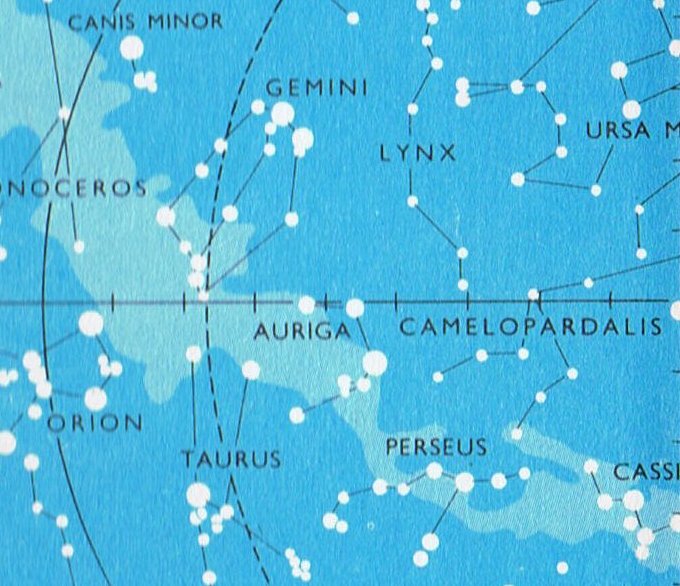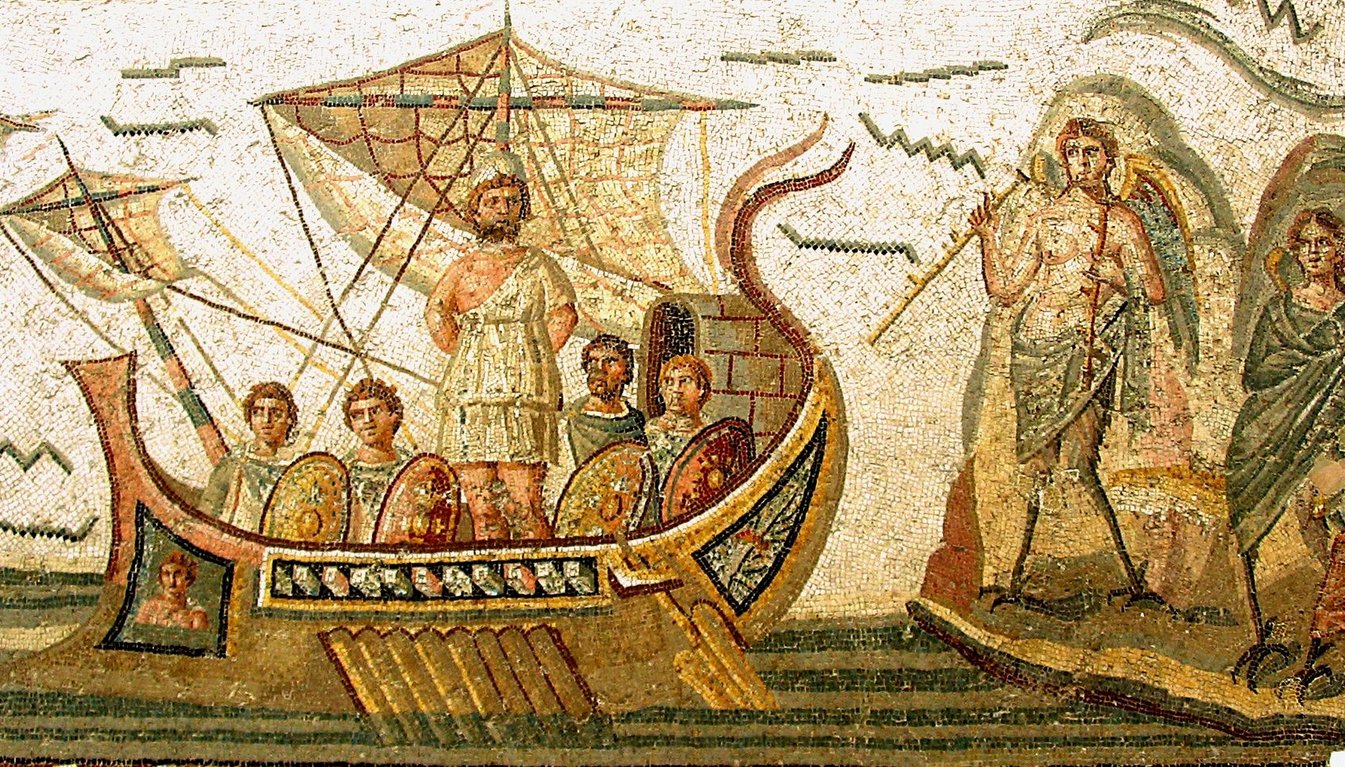Once again. There were Roman coins which illustrated Janus on one side (heads) and the stern of Argos on the other:  ... The Symplegades ... or Clashing Rocks, also known as the Cyanean Rocks, were, according to Greek mythology, a pair of rocks at the Bosphorus that clashed together randomly. They were defeated by Jason and the Argonauts, who would have been lost and killed by the rocks except for Phineus' advice. Jason let a dove fly between the rocks; it lost only its tail feathers. The Argonauts rowed mightily to get through and lost only part of the stern ornament. After that, the Symplegades stopped moving permanently ... ... The Argonauts, with the Golden Fleece on board, had to pass the Symplegades, the clashing rocks. Once a ship with its crew came through unharmed - so the 'blessed ones' (makaroi) had decided long ago - the Symplegades would stay fixed, and be clashing rocks no longer. After that 'accepting the novel laws of the fixed earth', they should 'offer an easy passage to all ships, once thay had learnt defeat'. This is only one station on the long 'opening travel' of the Argonauts transporting the Golden Fleece (of a ram), undertaken in all probability to introduce the Age of Aries, but it demonstrates best the relevant point, namely, 'the novel laws' ... Janus (as in January) was guarding the door on one side of the year and the Ship slipped through the door at the opposite side. Once upon a time the latter door must have been in spring, which means Janus once upon a time must have been in autumn. But Julius Caesar had inserted a pair of new months, which might have pushed the stars of January correspondingly ahead in the year. At would could have been the first Point of Aries, but what in earlier times may have been at the bridge across the Milky Way at Auriga:
The back of this ship had here been safely grounded after having lost only a part of its stern ornament (as if it had been the tail feathers of a dove). ... After the couple stay together for a while Fakataka [completing a cycle] is pregnant. So they go away because they wish to go to another place - they go. The canoe goes and goes, the wind roars, the sea churns, the canoe sinks. Kui expires while Fakataka swims.
Fakataka swims and swims, reaching another land. She goes there and stays on the upraised reef in the freshwater pools on the reef, and there delivers her child, a boy child. She gives him the name Taetagaloa ('Not-tangaroa']. When the baby is born a golden plover flies over and alights upon the reef. (Kua fanau lā te pepe kae lele mai te tuli oi tū mai i te papa). And so the woman thus names various parts of the child beginning with the name 'the plover' (tuli): neck (tuliulu), elbow (tulilima), knee (tulivae) ...
Travelling by canoe the stronger one, the male, should kneel in front (i mua), whereas the weaker female (perhaps with a child in her 'oven') would sit at the back side (i muri), and from that position govern the canoe in its path ahead. Above the AMOR (ROMA reversed) side of the coin was a bent henua (in contrast to the water jug above Janus). A bent henua could possibly have indicated that from here the sailor's curved legs should be used up on land. ... During his descent the ancestor still possessed the quality of a water spirit, and his body, though preserving its human appearance, owing to its being that of a regenerated man, was equipped with four flexible limbs like serpents after the pattern of the arms of the Great Nummo. The ground was rapidly approaching. The ancestor was still standing, his arms in front of him and the hammer and anvil hanging across his limbs. The shock of his final impact on the earth when he came to the end of the rainbow, scattered in a cloud of dust the animals, vegetables and men disposed on the steps. When calm was restored, the smith was still on the roof, standing erect facing towards the north, his tools still in the same position. But in the shock of landing the hammer and the anvil had broken his arms and legs at the level of elbows and knees, which he did not have before. He thus acquired the joints proper to the new human form, which was to spread over the earth and to devote itself to toil ...
In the G text this curve sign was used both at the First Point of Aries and at Ana-mua (the star pillar at the end):
However, whereas the bent henua at the time of the Bull was in a great shape, this was before encountering (some 41 precessional days later) the clashing rocks at the equinox which would claim a piece.
|
|||||||||||||||||||||||||||||||||||||||||||||||||||||||||||||||||||||||||||||||||||||||||||||||||||||||||||||||||||||||||||||||||||||||||||||||||||||||||||||||||||||||












